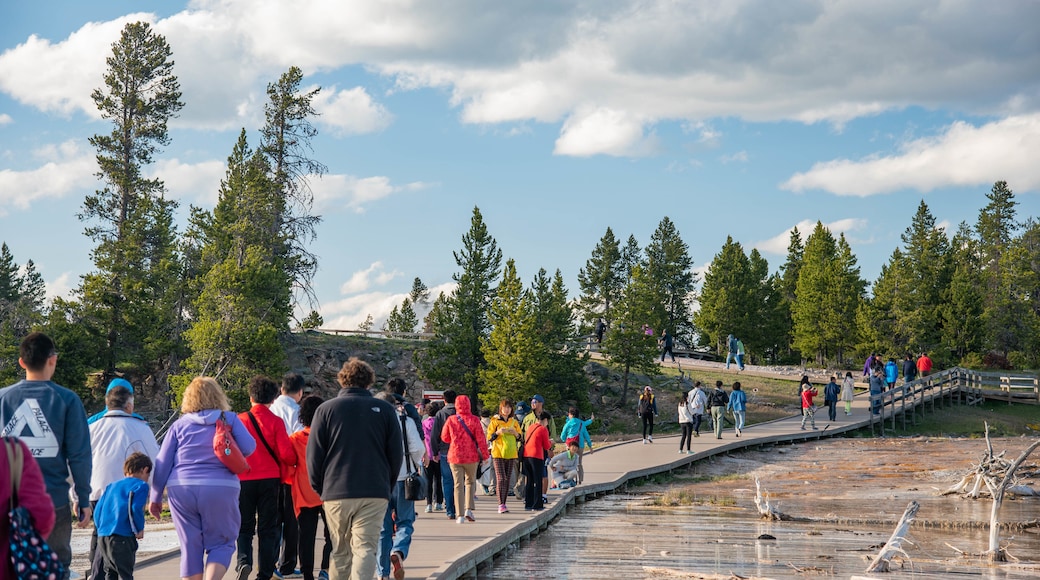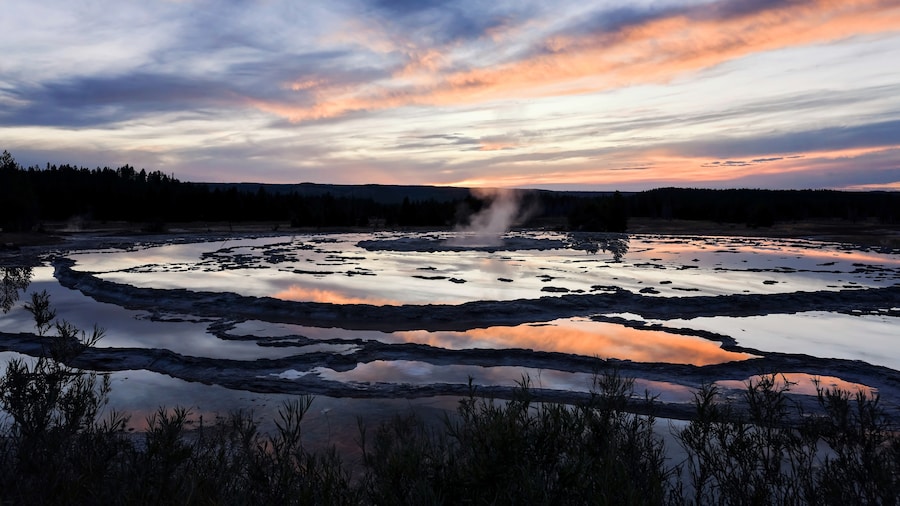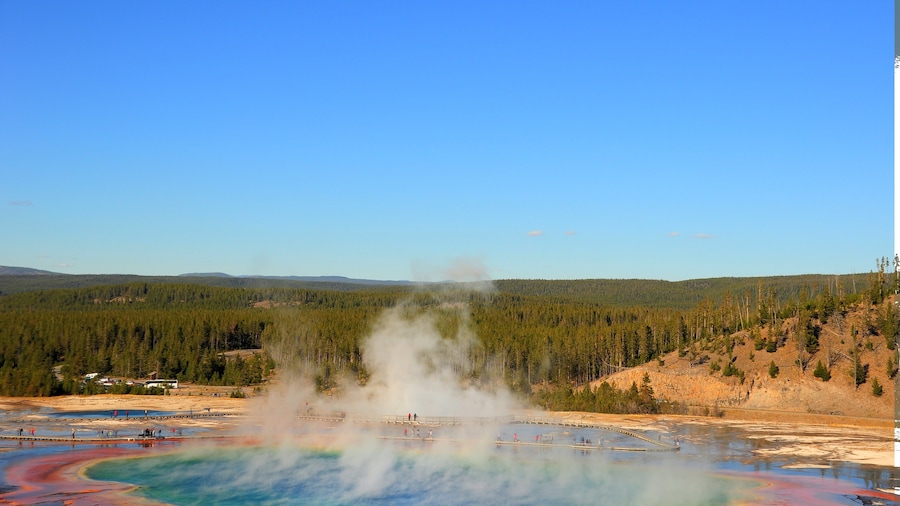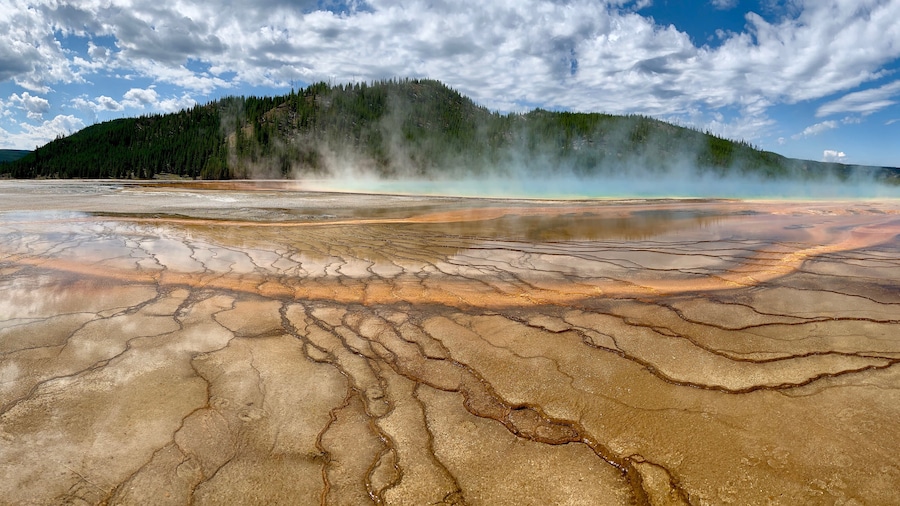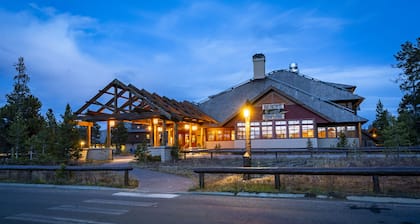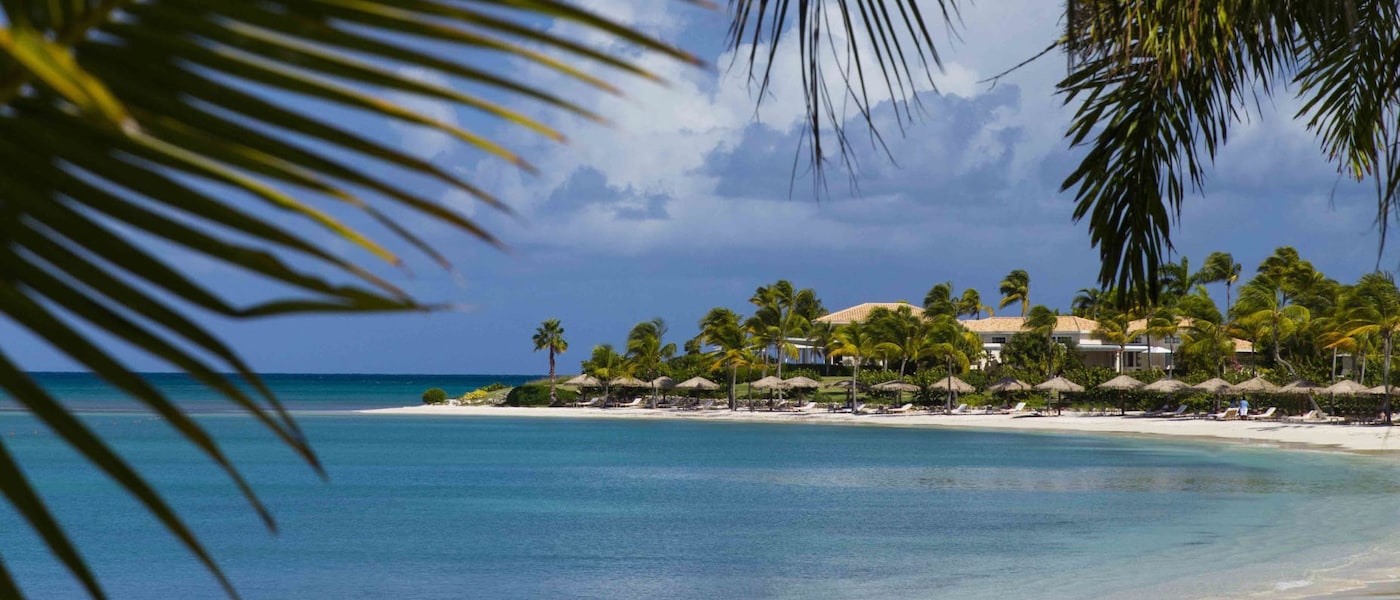Visit the Fountain Paint Pot in Yellowstone National Park to see an area where it looks as if nature is using brilliant paints to create a constantly changing picture. Pinks, yellows, blues, off-whites, browns, grays and vivid oranges blend into one another for a masterful piece of work.
Depending on when you visit, the mud may be a watery composition or a firmer consistency. Take the 0.5-mile (0.8-kilometer) walk along the boardwalk that travels next to the geothermal feature and notice plumes of steam escaping from underground via fumaroles.
The colors are attributed to the elements and microorganisms in the mud and bubbling gases. The national park is located on an active volcano, with a number of additional geologic features besides the mud pots and fumaroles, such as geysers and hot springs. Nearby Jelly Geyser erupts for less than a minute at a frequency of from 10 minutes to more than an hour apart.
The Red Spouter is named for its red tones of splashing mud. Other interesting volcanic features centralized in this location are Morning, Fountain, Twig, Spasm, Clepsydra and Jet geysers. Silex Spring mixes with groundwater to create the mud. Look for this spring, which overflows most of the year to make the soupy mixture. Silica is a major mineral component of the volcanic area. Take photos of Celestine Pool, a hot spring that will capture your attention with its impressive deep blue color.
Travel by car on the scenic 3-mile (5-kilometer) Firehole Lake Drive located across from the Fountain Paint Pot parking lot. Along the one-way route that returns to the Grand Loop Road you’ll see Grand Prismatic Spring, the largest hot spring in the park, as well as steamy jets including Great Fountain Geyser.
Find the Fountain Paint Pot area on the Grand Loop Road between Madison and Old Faithful on the western side of the park. Pay the fee for weekly or annual access to Yellowstone National Park. Note that the road closes from early November to late April.
